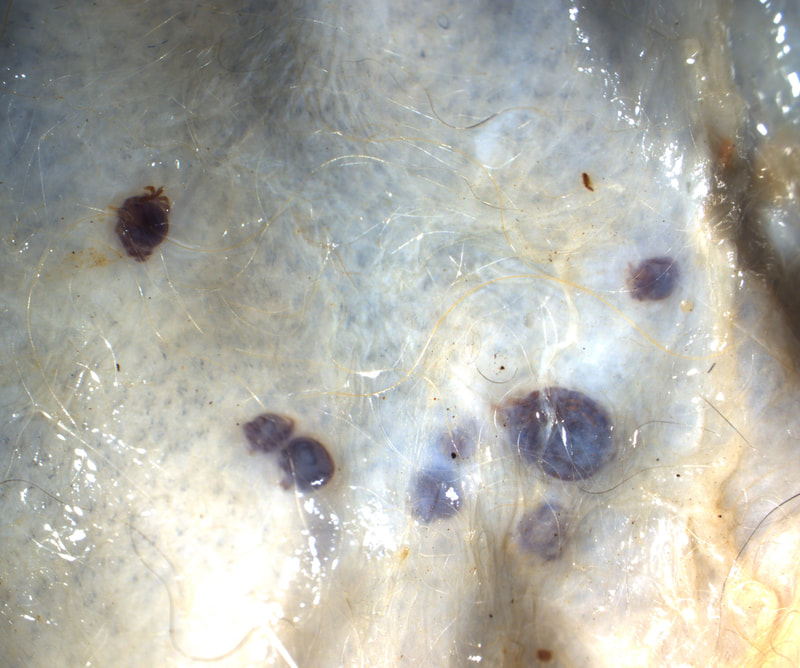Not your usual case of formicationThe following images are from an approximately 2-year-old fox (Vulpes vulpes), necropsied at Oklahoma Animal Disease Diagnostic Laboratory. The fox was euthanized due to traumatic injury. This finding was incidental. (Images 1 and 2) Case contribution: Thank you to Ryan Carson-DVM class of 2026 and the AAVP student chapter at Oklahoma State University Image 1: Finding at necropsy Image 2: Microscopic view Subcutaneous Amblyomma americanum ticks (females, males, and nymphs). Ticks are obligate ectoparasites that spend part of their life attached to their hosts. They have mouthparts with chelicerae that pierce through the skin of the host. Attachment is facilitated by the tubular hypostome and a secreted cement or latex-like compound that attaches the tick to the host until the feeding is complete. Although most of the subcutaneous cases of subcutaneous ticks have described Ixodes spp., previous reports from Missouri and Arkansas have described the finding of intradermal infestations of red foxes (Vulpes vulpes) with Amblyomma americanum ticks. Other descriptions from other countries have mainly been from foxes, golden jackals, domestic and racoon dogs; and a single report also described the finding in a human. The reasons to explain the unusual location on these host are not clear yet, indications seem to suggest that immune response of canids may play a role. |
Archives
July 2024
Have feedback on the cases or a special case you would like to share? Please email us ([email protected]). We will appropriately credit all submittors for any cases and photos provided.
|


